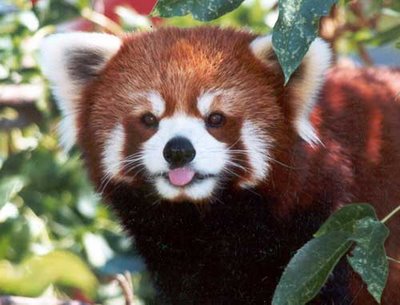 Photo by: Chief Trent
Photo by: Chief Trent The Red Panda is definitely in the running for the most Pokémon-like animal in the history of the world. My internal Cute-O-Meter runs high every time I come across one in the zoo.
The Red Panda is definitely in the running for the most Pokémon-like animal in the history of the world. My internal Cute-O-Meter runs high every time I come across one in the zoo.
But the taxonomic category these little cuties occupy is perhaps one of the most disputed in classification. Most scientists place them with procyonids, the raccoon family. But some scientists are not satisfied. Red pandas exhibit many of the characteristics of bears (ursids) as well; reflected in one of their common names, the catbear (not to be confused with the binturong, known as the bearcat).
Kenneth Johnson has spent years studying these creatures, and has come to one conclusion, described in his paper, "Mystery of the Other Panda":
Classifying red pandas causes a furor among biologists: Are the animals bears or raccoons? Our research suggested that giant and red pandas should not be shoe-horned into either family but classified together in one of their own.
But a recent molecular analysis places the red panda into a broad grouping along with skunks, believe it or not, and other mustelids. Researchers compared homologous nucleotide sequences - just the type of molecular character we discussed earlier - and constructed several different cladograms.
The issue is far from settled; indeed, Johnson may be right in suggesting a separate grouping for the pandas because of their unusual characteristics.
The next post will discuss one of the most distinct - and famous - of these: The panda's thumb. How did it evolve, and why are pandas classified as carnivores if their diet consists almost entirely of bamboo?
Sources:
Mystery of the Other Panda. In: International Wildlife. Vol.20, No.6. Nov/Dec 1990: 30-33.
Whence the Red Panda? Molecular Phylogenetics and Evolution. Vol. 17, No. 2, November 2000, pp. 190-199